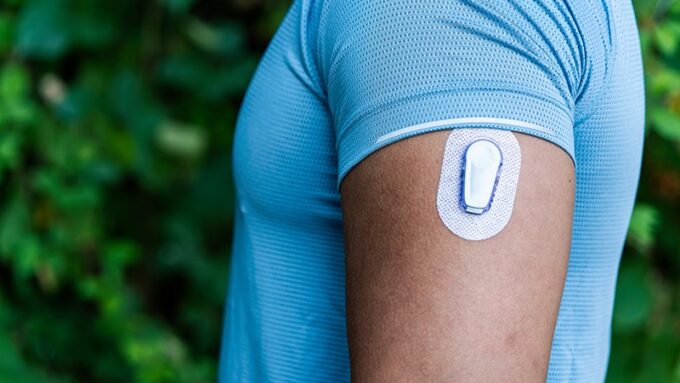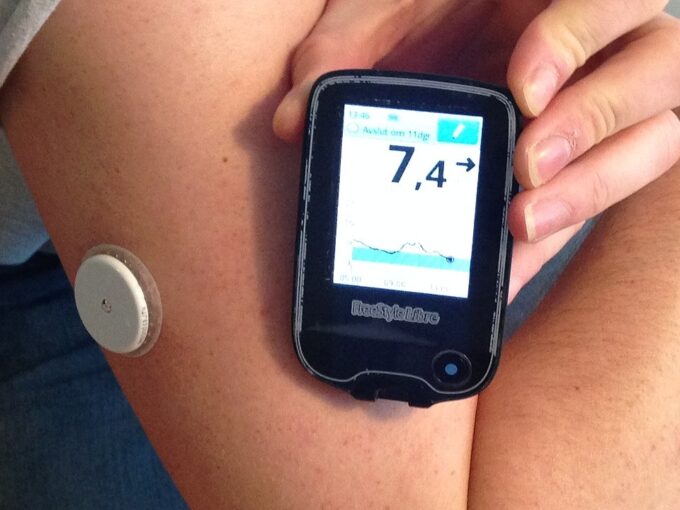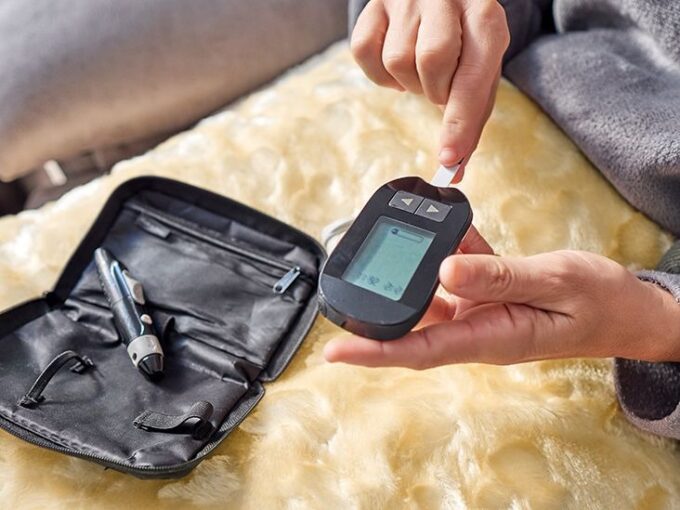Keeping blood sugar under control demands more than willpower. It demands data.
Blood sugar monitors give that data, offering a simple way to track, correct, and prevent dangerous health swings.
Anyone serious about managing blood sugar levels must know how these devices function, what affects their accuracy, and how to use them wisely.
Key Highlights:
- Blood sugar monitors provide essential data by measuring glucose through blood or fluid samples.
- Choosing the right type of monitor impacts health outcomes and quality of life.
- Continuous monitoring devices offer deeper insights and better trend tracking.
- Incorrect testing practices can lead to dangerous misreadings and wrong treatments.
- Smart supplements support stable blood sugar and healthy energy levels.
- Reliable monitoring creates real opportunities for better long-term health.
How Blood Sugar Monitors Function

Source: nm.org
Every blood sugar monitor, whether basic or high-tech, follows a simple principle: detect glucose levels in the body fast and accurately.
Traditional glucometers rely on a small drop of blood, usually taken from a fingertip, placed on a disposable strip.
The strip contains enzymes that react with the glucose. This chemical reaction generates a tiny electrical current that the monitor reads to determine the glucose concentration.
The result appears in numbers on a small digital screen.
Continuous Glucose Monitors (CGMs) work differently. A sensor inserted under the skin measures glucose in the interstitial fluid, the fluid surrounding cells.
These devices collect new readings every few minutes and send the information wirelessly to a receiver, smartphone, or smartwatch.
Some CGMs include alarm systems to alert users when glucose levels move dangerously high or low.
This real-time tracking often prevents emergencies that standard testing might miss.
Understanding how each monitor operates matters because not every device suits every user.
Lifestyle, medical needs, cost, and personal comfort all influence the best choice.
Accuracy Matters More Than Convenience
Blood sugar management depends on numbers that can be trusted. Inaccurate readings mislead doctors, patients, and caregivers. Small errors can result in wrong insulin doses, missed warning signs, or dangerous interventions.
Several factors can corrupt a reading. Dirty hands, wet fingers, and even traces of food on the skin can create false highs or lows.
Old or improperly stored test strips often become unreliable.
Environmental factors like temperature or altitude may also interfere with monitor performance. Many devices need regular calibration, and failure to do so weakens their reliability.
Because accuracy is everything, some people choose to add supportive methods like taking a blood sugar supplement alongside regular monitoring.
Products like Blood Sugar REx help maintain healthy blood sugar levels, assist metabolism, reduce sugar absorption, and support energy levels throughout the day.
Supplementation never replaces monitoring, but it strengthens the body’s ability to stay balanced between measurements.
Traditional Monitors Versus Continuous Monitors

Source: en.wikipedia.org
Traditional blood sugar monitors demand more user effort. Each test requires a fresh sample, and users must manually log results to detect patterns.
However, they remain affordable, portable, and often covered by insurance plans with little out-of-pocket cost.
Continuous Glucose Monitors (CGMs) offer freedom from constant finger pricks.
The sensor automatically tracks and transmits glucose data, giving users access to charts, graphs, and trends.
The ability to spot trends, rather than react to isolated numbers, gives CGMs a major advantage for those who struggle with sudden blood sugar changes or aim for tighter control.
CGMs do cost more. Sensors require regular replacement, and not all insurance plans fully cover their price.
Some users also find sensor placement uncomfortable or inconvenient. However, for those facing volatile blood sugar shifts or relying heavily on insulin, the benefits far outweigh the costs.
Choosing between the two options depends on specific needs, habits, and financial factors.
Building a Smart Monitoring Routine
When and how often someone monitors blood sugar depends on many factors. Some people with Type 2 Diabetes may only need a few checks a week. Others, especially insulin users, might test ten times daily.
Ideal monitoring moments include:
- Upon waking (fasting level)
- Before eating
- Two hours after meals
- Before physical activity
- Before sleep
- Whenever symptoms like dizziness, sweating, or confusion appear
Patterns matter more than isolated numbers. A high reading after one meal matters less than consistently elevated numbers across several days. By tracking at key times, users build a detailed picture of how food, activity, sleep, and medication affect blood sugar.
Using apps that connect to monitors can also automate some of the recordkeeping and pattern recognition, saving time and avoiding human error.
Features That Matter When Choosing a Monitor

Source: healthline.com
Choosing the right monitor goes beyond brand names and prices. Features play a major role in making monitoring easier, faster, and more accurate.
Look for:
- Short measurement time (five seconds or less)
- Small blood sample requirement
- Bright, clear displays readable in low light
- Memory storage that tracks multiple past readings
- Bluetooth or wireless connectivity
- Affordable and easily available test strips
Battery life also deserves attention, especially for people who travel often or live active lifestyles.
Some monitors offer rechargeable options, reducing ongoing battery costs and environmental waste.
Before buying, also check whether the chosen monitor works well with health insurance plans, as this can dramatically cut long-term costs.
Knowing When It Is Time to Replace Your Monitor
Technology ages faster than most realize. Blood sugar monitors lose reliability over time, even when handled carefully.
Signs that suggest upgrading:
- Frequent unexplained fluctuations between readings
- Difficulty finding replacement strips
- Cracks or damage to the display
- Memory function errors
- Lack of support for newer mobile health apps
Manufacturers usually recommend updating every three to five years.
Some newer models offer improvements like automatic calibration, built-in trend analysis, or smaller lancets for easier blood collection.
Holding onto outdated models could risk health over a few dollars saved.
The Most Common Testing Mistakes

Source: healthline.com
Even the best equipment fails without the right habits. Many people unknowingly sabotage their results.
The most frequent mistakes include:
- Testing with dirty or wet hands
- Using expired or improperly stored test strips
- Skipping calibration requirements
- Ignoring confusing readings without double-checking
- Failing to test during critical times, such as before meals or after exercise
Over time, small errors compound into serious risks. Building consistent, careful habits strengthens the value of every measurement.
Making Monitoring a Less Burdensome Task
Monitoring does not need to feel like a daily punishment. Small tweaks create a smoother routine that fits into real life instead of interrupting it.
Keep supplies organized and in visible places to avoid skipping tests. Set reminders on smartphones until the schedule becomes automatic.
Reward yourself for maintaining consistency, even if the results are imperfect.
Create small rituals around testing — such as a quick pause and breath after checking — to lower stress and treat monitoring as self-care rather than a chore.
For many, pairing solid monitoring habits with supportive products like blood sugar supplements offers the easiest path to balance and sustained wellness.
Conclusion
Blood sugar monitors are not just machines — they are lifelines. They reveal dangers before symptoms strike and offer daily evidence of how choices shape health.
Learning how monitors work, selecting the right device, maintaining careful habits, and reinforcing the body with smart supplements all build a safer, stronger foundation.
No matter the style of monitor chosen, the real goal stays the same: gaining control, avoiding risks, and building a better tomorrow.



